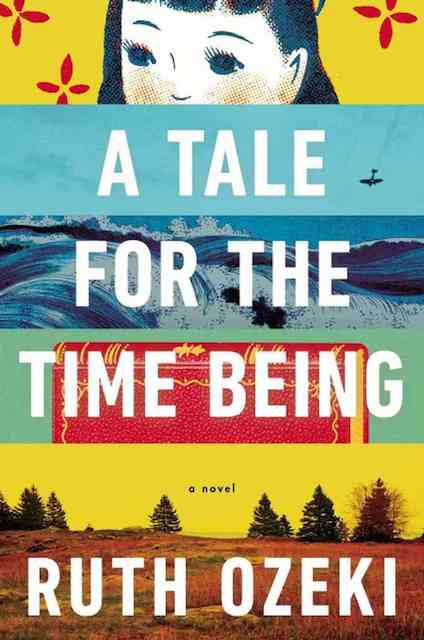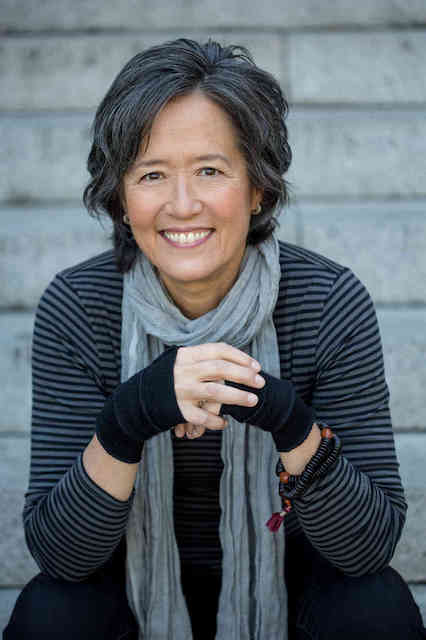The memories surfaced by degrees. A sense of déjà vu materialized while reading Ruth Ozeki’s third novel, A Tale for the Time Being, now out in paperback. The novel centers around a character named Ruth, a woman very like Ozeki herself—a writer and Japanese-American living on a small island off the coast of Canada with her husband and cat. As I read, memories of the week I had spent under Ozeki’s tutelage at a writer’s conference in Taos sharpened. I remembered Ozeki sitting erect and still, her thin hands open in her lap as she spoke to our class about meditation and writing. She taught us to shut the voices of technology away, to focus on some seed until it murmured. In her latest book, the fruits of her own daily engagement in this Zen Buddhist practice result in a multi-voiced, layered tale. The worlds of Nao, a 16-year-old Japanese girl, and present-day Ruth intersect when Nao’s diary washes up on Ruth’s favored Pacific Northwest beach. “The purple words were mostly in English, with some Japanese characters scattered here and there, but her eye wasn’t really taking in their meaning as much as a felt sense, murky and emotional, of the writer’s presence,” Ozeki writes of Ruth’s discovery. Prompted by an inexplicable connection, Ruth begins to invest time and emotion into finding out the fate of Nao and her family. Back in 2006, when Ozeki began the novel, it was not Ruth who discovered Nao’s diary. “It took me a long time to find Nao’s reader,” Ozeki said during a recent interview, explaining that four or five characters had vied for the part. “Nao knew there would be a reader, I knew there would be a reader … but I kept auditioning characters for that role.” It wasn’t until the simultaneous earthquake and tsunami hit Japan in early 2011 that Ozeki found Nao’s perfect reader: herself. “I suddenly realized I had written a pre-tsunami book and now we were living in post-tsunami world. How, as a fiction writer, do you respond to a world that’s become so real?” Ozeki explained that it was her husband, Oliver (also the name of the fictional husband in her book), who suggested the fix, to “break the fictional container and put myself in.” The semi-autobiographical Ruth interacts with the wholly fictional Nao when translating and deciphering Nao’s candid firsthand accounts of adolescent bullying, her father’s suicidal ideations and the profound influence of her 104-year-old Great Grandma, Jiko, a Buddhist nun. A real-life 13th-century Zen master, Dōgen Zenji, sparked the idea for A Tale for the Time Being seven years ago. Ozeki was immersed in Zen Buddhist reading and practice when Dōgen’s concept of being and time (Uji) struck her. “The guy who translated it was Japanese, so it was a little awkward—the time being,” she explained. With an emphasis on “being,” Ozeki imagined a young girl sitting in Tokyo, writing a diary to some reader, a fellow “time being.” Ozeki’s two previous novels, My Year of Meats and All Over Creation, grappled with topical issues (the beef industry and genetic engineering, respectively), among many others. These subjects, as well as her latest focus on environmental disasters and cyber bullying in Japan, have often led people to peg her as a “political” writer. “It always baffles me,” she responded. “I think about these things, I notice and read about them.” But, she continued, “All novels are about bullying, about power discrepancies.”On the phone, during our interview, Ozeki’s voice was the same serene tenor I remembered. Gracious, she thanked me when I congratulated her on her recent success—shortlisted for the prestigious Man Booker Prize among many accolades—and laughed. She declared, “I’m always surprised that anyone is interested in anything I’m interested in—that’s really nice.”For someone who has trouble imagining her own influence, who sees herself as part “ventriloquist,” Ozeki can lay down a prescient vision of the world. She can weave disparate facts, languages and people into a story that is both time-bound and timeless. The novel that the New York Times described as a “porous membrane that separates fact from fiction, self from circumstance, past from present,” showcases Ozeki’s grapple with existence. In the midst of technological advancements that distort the meaning of time, the book and Ozeki ask, “When do we turn off? How do we nurture a sense of equilibrium?” With Nao, Ruth, Great Grandma Jiko and her network of characters, Ozeki answers in ways both brutal and beautiful. If you wish to ask the author of A Tale for the Time Being questions about her writing, her life or the malleable borders between the two, head to Bookworks on Jan. 16, at 7pm, for a reading followed by a Q&A segment.
Ruth Ozeki Reading and Q&AThursday, Jan. 16, 7pmBookworks4022 Rio Grande NWbkwrks.com, 344-8139











